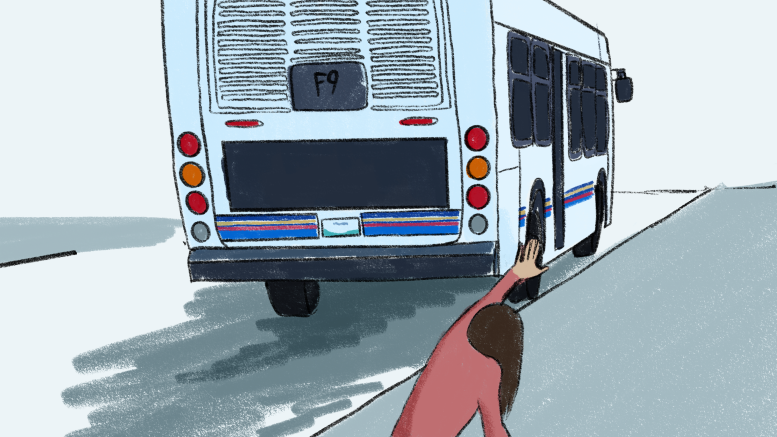Winnipeg Transit is my mortal enemy. If you have ever ridden on any of the Winnipeg bus lines,
you probably know what I am talking about. The routes that some of these buses take are like
uncrackable codes. I, for one, do not understand why my bus has to go through a Walmart
parking lot to get me to the U of M.
The bus, as my primary source of transportation to school, always leaves me dreading school
on Mondays. However, my immense hatred for the bus didn’t always exist. It all started when
they changed the bus routes.
I used to find my zero-transfer bus ride therapeutic. I would listen to music or use the time to
catch up on schoolwork. Now my bus route requires multiple transfers, often resulting in me
missing the bus all together.
Looking back, I should have been more grateful for my quick 40-minute bus ride instead of
constantly complaining that the ride was too long. I feel like, due to my complaining, the
universe decided to tack an extra hour onto that 40-minute bus ride.
On campus, there is a massive consensus that these new bus routes are nonsensical,
especially in terms of location. In my opinion, these bus routes were created by individuals who
clearly do not take the bus.
For many university students, the bus is the only way to get to campus. Suddenly deciding to
change previously established routes has created stress for students who depend on the bus
system — I have shown up late to classes because my bus never showed up.
Even for the students who park and ride, transit is still complicated. I have a friend who usually
parks and rides, and she has said that when she pulls up to Seel Station there is nowhere to
park, which results in her having to park blocks away and usually missing the bus.
The bus system needs to be better. University students should not be fighting for a spot on the
bus or having to take three different connections over the span of two hours to get to school.
The individuals who make the bus lines need to realize it should be less about cutting costs and
more about listening to the needs of the people who rely on the transit system every day.


